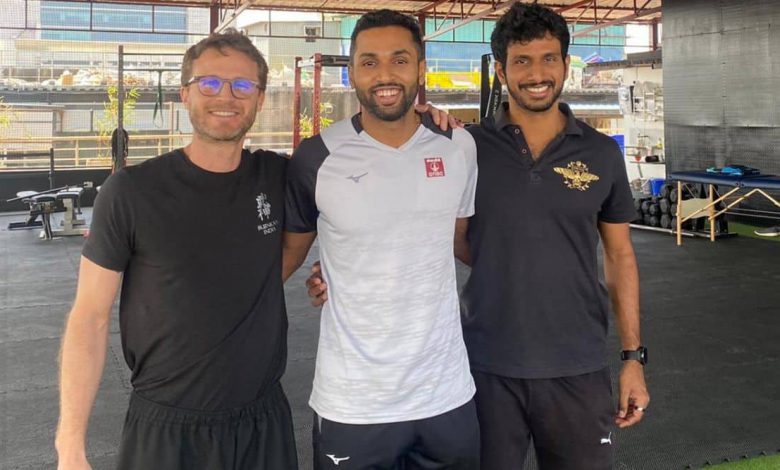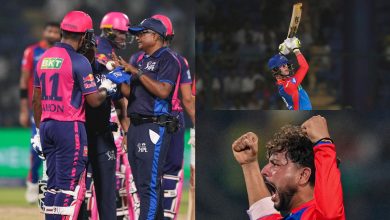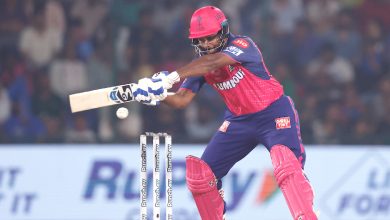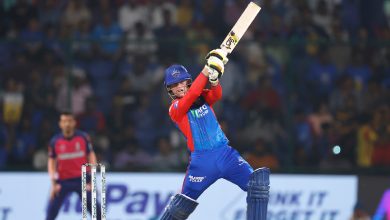Man behind HS Prannoy’s mental strength: Former international fencer and Israeli special forces member | Badminton News

In his private thought swirl amidst the din and decibel of 12,000 screaming people, a sense of calm focus descended. “I just zoned out. I was actually not thinking about anything else today, just thinking about what to do to take the next five points. A lot of thinking I was doing inside but was not aware of what was happening around me. I was pretty much in my zone after the second game.”This was HS Prannoy explaining in brief how he famously brought down Viktor Axelsen playing the Dane at the badminton World Championships quarterfinals in Copenhagen. At stake when playing in the lion’s den was Prannoy’s first World’s success, an elusive achievement, after spending a dozen medal-less years on the international circuit. At 31, Prannoy though wouldn’t think time was running out, but that his time was now. He had trained for 3-4 years to think in that fashion.Mental trainer Mon Brokman, watching the match from Bangalore, knew he had equipped his ward with tools to deal with just this sort of situation. He would be pleased with what followed. A former international in fencing and part of Israeli special forces during his 20-year military stint, Mon had worked with Prannoy on something as fundamental as how to breathe when things don’t go your way. Mon’s expertise is in teaching athletes to deal with discomfort, something he himself learnt during his 20 years in the military where he says he grew an identity under constant pressure and persent stress.
“The big part of learning in the military is not just physical or tactical, but resilience to different situations. You learn certain tools in training used when everything is not going smooth. Sometimes athletes hope and expect everything will work for you, I call it the red carpet-expectation. But I teach how to prepare when things don’t work for you. Against Axelsen in the first, it didn’t work out for Prannoy. But he knew how to keep it calm and smooth,” Mon, who runs the Behavioural Foresight training centre in Bengaluru, explains. These tools use physiology at its base. “Things like the nervous system and heart rate if you can control them, if you can control emotions in critical moments, you finish a winner.”
Knowing he had worked hard all his career to get into this medal position, but finding the crowd was shouting against him during the Axelsen match, would’ve unnerved any shuttler. “The Prannoy when we started working together, might have ‘hoped’ certain situations will happen in his favour, or would be comfortable with some opponents and not with others. But for the Prannoy today, who the opponent is won’t matter. He knows nothing comes easy. He could be above the shouting crowd, when the match didn’t start the way he wanted.”
He calls Prannoy an artic athlete, and places a lot of store on helping him to unfurl that creative personality on court. “Some athletes are mechanical, some express themselves like arts like Prannoy. He does his homework on tactics and strategy. We worked on enabling him to express freely to play at his best.”
Even after injury, most athletes rely on going back to be technical, but Mon would stress on forgetting about the past, and working with strength on new things. “Against Viktor after the first set, he could focus on what’s relevant and to express creatively. You can’t play the whole match with one tactic. He played a few points differently. And no matter if he wasn’t comfortable, he remained creative as opponent.”
Mon was always impressed with Prannoy as an athlete. “I saw a tough person with resilience four years ago and with a fire to keep performing.”
At that time he was injured so badly, he couldn’t practice even, but Mon found the steely determination inspiring. He found someone that was injured, who was finding it tough to keep pushing when the season didn’t work out well.
“He was feeling lost. We gave him tools to regain trust in himself.”
What made Prannoy unique was how late in his athletic life he had the courage to seek out mental training, unlearn and reassemble his mind framework. He was 27 then. “When you have a lot of experience and already know a lot of things, athletes typically don’t want to explore so much. They just repeat what has given them past results. We needed to build trust with Prannoy because you need to choose carefully who you are lening to. But he was prepared to find solutions, even if they were inconvenient and not comfortable. I haven’t seen that willingness to try things never tried before in a lot of mature, experienced athletes,” Mon explains.
One of the techniques was to test his physiology in simulation rooms where he was made to play certain computer games and his performance outside was plotted against markers on his state of mind, with biofeedback and neurofeedback tools. These were memory games, competitive races and first reaction games from his special forces days. Mon had seen a spark when in Japan a few weeks before his World’s medal, Prannoy flipped a set to win after trailing Axelsen 5-6 points.
Mon’s earliest findings on Prannoy were that when things didn’t work out for him in a match, he would start to attack quickly. “We discussed how he just needs to get points, not win them quickly! It’s understandable when you lose 3-4 points continuously, you want to feel good so you rush to get points. But in the last 2 years, he has mastered his emotions,” Mon says.
It’s evident in matches, where he doesn’t stab at the next 1-2 shuttles, but moves to construct a long rally. “Even if you want, when pressure is on, you tend to go back to what you used to do. Hence it’s easier to work with kids who don’t res change. Prannoy, even with that experience, though wanted that change.”
It took him time – to effect it first in training and then in tournaments. Years of conditioning, stagnant functioning in certain ways can hold athletes back. “But Prannoy was open to changing things,” Mon says.
One of the toughest techniques was to learn to breathe a certain way. “If you can’t control breathing, you can get stuck. In badminton, you need to be able to move to the next point quickly and can’t afford to get stuck. We built his breathing capacity and he realised it can liberate the way he plays. So even if he disliked the techniques, he understood it was important and went for it. Daily, he works on mental economy to perform.”
The results were observable as far back as the 2-3 Thomas Cup key deciders he played last May. But breath control was most evident in the Axelsen match in the ‘zone’ that Prannoy spoke of. “Instead of thinking of lots of fears about how far he can go and allowing emotions to control him, he trusted himself, followed the breathing process.”Mon came from an Olympic family where both his parents were at the Games, so there was a tradition to be athletes.
“I started at 6, and 12 I was in the national team in fencing. I went to the European, World Championships. At 18, we have compulsory military in Israel. I was still competing while I served,” he recalls. Psychology gave him the most amount of learnings in special forces.
“In individual sport, it’s you against everyone. Even your best friend can be your opponent. Same was the case for Prannoy against Kidambi (Srikanth), so I had tuned myself to understand his situation.”
Inspired eastern philosophies
Nimrod Mon Brokman has learnt Japanese martial art, Chinese medicine and pursued Vipasana.
Mon’s coming to India itself was a search for more knowledge of eastern philosophies. He was studying psychology in Israel, and got acquainted with eastern knowledge like yoga and meditation in 2015. He learnt Japanese martial art, Chinese medicine and pursued Vipasana and figured there’s a lot of wisdom in eastern philosophies. “I wanted to learn the vocabulary of eastern knowledge. But I realised in the best books translated from Indian languages to English to Hebrew, a lot was lost in translation,” he recalls.
In 2016 he would work with Israeli athletes bound for the Rio Games, but the end of the year, he had travelled to India and met business partner Shiva Subramaniam. “Learning meditation, I decided to stay longer in India.”Most Read
1
Vijay Sethupathi is ‘death personified’ in Jawan, Shah Rukh Khan offered to sacrifice his own scenes to uplift others: Editor Ruben
2
Gadar 2 box office collection Day 20: Sunny Deol film makes almost eight times its budget, mints Rs 475 crore
See More
He’s been in India for seven years, and is smitten its chaotic creativity. “You look left and right, there’s the most rich and most poor. But there’s something colourful, creative and alive about this place. Most other places around the world are very technical, straight line, linear. But yaha sab kuchh milega,” he says in a smattering of Hindi.
“In India sometimes the longest route is the shortest route. People solve problems in a unique way,” he says of its mystical contradictions. Mon is attracted to the usual tropes – ancient philosophy, ayurveda in food, and admires the fact that many international companies are led Indians.
Working with Prannoy and an IPL team in Rajasthan Royals also satiated his appetite to delve into psychology of sport. It’s the literal Indian food though that he can’t get over. “In Israel I didn’t have the foodie culture. We just eat after we are hungry. Here I love everything that my Bengali fiance’s mother makes at home. In India it’s not just about taste. There are entire stories about the dish itself,” he chuckles. His favourite story to tell this last week though, was the long elusive podium success he tasted with the brand new World Championships bronze medall, HS Prannoy.







